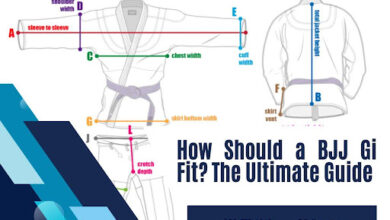From Uniform to Illumination: Essentials in Clinical Settings

In the complex universe of the contemporary healthcare system, each detail, either seen or unseen, implies accuracy, sterility, and confidence. Two vastly different yet equally important elements exemplify this principle: the nursing cap and endoscope light guide bundles. One is a mark of professionalism and care, and the other is a technological wonder that is not visible to the naked eye, which allows bringing up high-definition images in the process of diagnosis.
This article explores how both the nursing cap and endoscope light guide bundles—though unrelated in function—embody the ethos of modern medicine. While the nursing cap continues to represent discipline and hygiene on the surface, endoscope light guide bundles support the unseen precision behind minimally invasive procedures.
The Nursing Cap: A Symbol of Tradition and Hygiene
Traditionally, the nursing cap was not merely a uniform accessory, but a representation of professional commitment, honesty and discipline. The cap appeared in the late 19th century and was based on the religious habits that nuns, one of the earliest caregivers in the organized healthcare systems, were wearing. With the course of time, it grew to be a symbol of nursing identity, changing in its form and meaning.
The nursing cap also comprised a part of the cleanliness and hygienic conditions in most healthcare facilities. Its white material had to be strictly taken care of and this represented the sterile nature that should be present in clinical areas. The cap made them feel responsible and proud, particularly at the graduation ceremonies where the nursing students were presented with the caps at special “capping” ceremonies.
The nursing cap is no longer an essential part of the dressing code in most western nations and practicality, but it is still a significant element in certain areas and formal occasions. And even in societies where people still believe in uniforms, the cap creates trust between the patients and the caregivers. It is a sign that will speak of professionalism, order, and adherence to healthcare values.
Moreover, in contexts where caps are still worn during daily practice, they are often made of disposable or washable materials, aligning with modern infection control protocols. Therefore, in spite of the changes in healthcare, the nursing cap is also changing, adapting to the new conditions and closing the gap between the tradition and the contemporary standards of hygiene.
The Role of Endoscope Light Guide Bundles in Modern Diagnostics
While the nursing cap operates in the visible realm, endoscope light guide bundles work behind the scenes—literally—by delivering light into the human body to enable internal visualization. These fiber optic bundles are integral components of flexible endoscopes, facilitating accurate diagnosis and therapeutic interventions.
Light guide bundle is made up of thousands of fine optical fibers which conduct the light of an external source into the body cavity. This light source enables the doctors to have a clear view of the internal organs including the esophagus, stomach, intestines and respiratory tract in real time. The quality of these images is greatly reliant on the quality and structure of the light fibers.
Modern endoscope light guide bundles are designed with durability and flexibility in mind. They should be able to bend and twist frequently. And you know what their exciting features are? They can bend or twist without losing their efficiency in transmitting light. They are reliable and have long life due to use of high-performance glass materials, accurate fiber positioning and protective finish. On certain high-end models, these bundles are removable/replaceable which enhances maintenance and lowers the cost of repairs.
With the increased level of diagnostic imaging, there has been an increased requirement of having higher resolutions of visuals. Light guide bundles have become important in high definition and narrow band imaging systems used to sense abnormalities on a microscopic scale. Whether in gastroenterology or pulmonology, these components provide the visual accuracy required by physicians in making an early diagnosis and formulating an effective treatment strategy.
Advances in Technology and Uniform Design:
Both the nursing cap and endoscope light guide bundles have undergone significant innovation to meet modern healthcare demands. Such innovations revolve around enhancing functionality, hygiene and efficiency without losing out on values.
In terms of attire, many institutions have replaced cloth caps with disposable nursing caps to align with infection control guidelines. These caps are manufactured using non-woven breathable materials that prevent the danger of contamination and are comfortable to wear during long shifts. Such disposable equipment has become the norm in operating rooms and other sterile areas. They help in making the clinical environment more safer.
Meanwhile, endoscope light guide bundles are being enhanced with new-generation fibers that offer greater brightness, color fidelity, and bend resistance. Manufactures are also trying modular designs which can be serviced or have components replaced quicker. Some high-end endoscopes even incorporate LED-based light transmission, further improving illumination quality and energy efficiency.
Supporting Staff and Patient Safety at the Same Time:
Safety in healthcare does not apply to the patient only, but also to all the members of the medical team. Uniforms, technologies, and the right tools will keep both care providers and care recipients safe. Nursing caps, especially in their disposable form, minimize the transmission of airborne particles and hair-borne contaminants. This is critical especially in operating and intensive care units.
Simultaneously, endoscope light guide bundles support accurate, minimally invasive procedures that reduce patient recovery time, surgical risks, and overall hospital stays. These bundles are crucial in enhancing a good visibility, thereby minimizing diagnostic errors and maximizing the outcomes of surgery.
Therefore, the two objects, which are tremendously different, can be described as silent keepers of safety. They are designed and used with a passion for excellence, precision, and respect to life in all levels of care delivery.
Conclusion:
The nursing cap and endoscope light guide bundles may seem unrelated at first glance, but both are essential in their own right. One is a symbol of commitment and faith at the surface level; the other provides inconspicuous clarity that enables life-saving diagnosis. They both embody the combination of tradition and innovation that characterizes present-day healthcare.
Medicine will continue to change, and the instruments and symbols that aid it will change as well. Yet, whether they are seen on the head of a nurse or obscured in an endoscope, these components will remain essential to the standards, safety, and efficacy of patient care everywhere.




